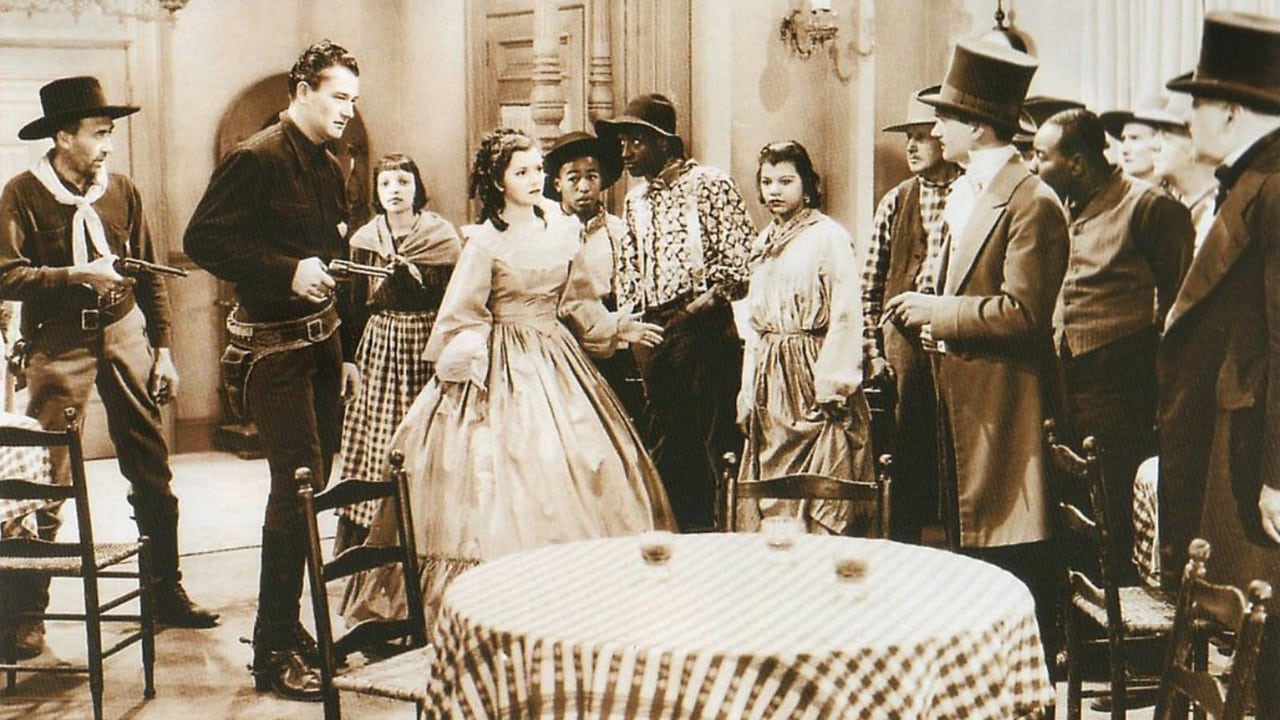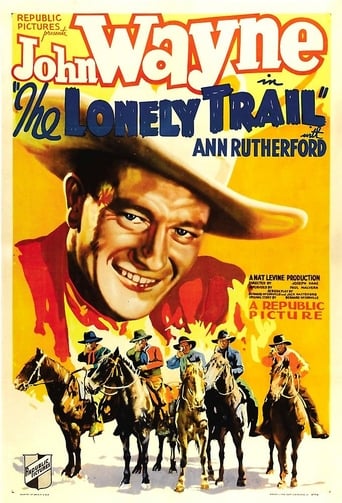



Yawn. Poorly Filmed Snooze Fest.
People are voting emotionally.
It is a performances centric movie
This is a dark and sometimes deeply uncomfortable drama
View MoreMuch of interest in this western including a night-time climax with our heroes fighting the villains in silhouette and insurgents carrying torches dynamiting the gates of the fort. Wayne and his sidekick Toney (called "Tony" in the credits, but then Etta McDaniel is given an "s" in her surname so the official spelling is none too reliable) make a late entrance, after a montage of spectacular Civil War stock footage and a lot of material in which the heavies led by Cy Kendall (love his broad-brimmed hats) establish their oppression. The bad guys as usual have it all over the goodies in charisma. Wayne is pleasant enough, but squawky-voiced Rutherford is a pain and Mr Meadows/Moore is bland to the point of somnambulism. As for Mr Toones, we will pass over his stereotype in silence. Yes, give us dyed-in-brutality Bob Kortman and his naive but willing henchman Yakima Canutt any day. The one thing the nice folks have going for them is an ingenious series of musical look-outs, featuring Stephen Foster's "Camptown Races". Another pleasant musical device has a fine choir singing "Swing Low, Sweet Chariot" as the faithful retainers stage a mock funeral.A rather extensive support cast list has been provided for this one by Republic's publicity boys, but why no credit for Charles King as the sentry? And isn't that Lafe McKee in a cameo part as the father prisoner?For all the threats and on-camera opportunism, there is not a great deal of gutsy action in this one. Even the climax is resolved with disappointing rapidity. The presence of Yakima Canutt in the cast often guarantees thrilling stuntwork, but even that is limited to a couple of falls and a good leap from horseback on to a fleeing buckboard. Joseph Kane has directed this chase with some welcome running inserts, and has generally handled the film competently, making fair use of his Lone Pine locations. (That is Mount Whitney you can see in a couple of backgrounds, even though this is supposed to be set in Texas).Incidentally, former stuntman turned producer Paul Malvern was a crack shot. He and Wayne insisted on actually shooting the dipper out of Duke's hand. Kane refused to direct such an "idiotic" stunt, so Malvern himself took over for this one shot. (Actually it required two. The first shot hit the dipper all right, but failed to knock it out of Wayne's hand).
View More. . . that Racist Revisionist Endless Melodramatic Exercise in Hate Speech known as GONE WITH THE WIND (on the shelves of most every American Urban High School Library, while THE Great American Novel--THE ADVENTURES OF HUCKLEBERRY FINN--is Universally banned by the self-proclaimed Know-Nothings!), she was "inspired" (more accurately, Dispired) by this John Wayne flick, THE LONELY TRAIL. Wayne plays "John Ashley," to whom Ms. Mitchell pays homage with her similarly mealy-mouthed "Ashley Wilkes" character. TRAIL covers the entire War to Defeat Lazy Southerners' Racist Evil in about 12 seconds (beating GWTW by roughly an hour and a half--which most viewers will find to be a definite improvement!). Ann Rutherford plays the model for Ms. Mitchell's "Scarlett O'Hara," called "Virginia" here. To pad out GWTW into an Umpteen-hour soap opera, Mr. Mitchell splits Ashley and Virginia into a couple characters each. Otherwise, most of the familiar GWTW scenes are here, such as when Clark Gable convinces the Union Commander that Ashley is NOT the Grand Wizard of the KKK. By cutting out most of Ms. Mitchell's unseemly histrionics and cursing, TRAIL clocks in at a shade under 56 minutes, which is more than enough of a not-so-good thing.
View MoreJohn Wayne is indeed traveling The Lonely Trail in this film. He's a Texan who enlisted with the Yankee army and has now returned home after the war to the scorn of his neighbors. They've been given less reason than ever to like the color blue. Reconstruction has come to Texas in the position of profiteering carpetbagger Cy Kendall who had a specialty in roles showing corpulent corruption.The more Wayne sees, the more he doesn't like, the trick now is to convince his neighbors he's really on their side.Sad, but this is one of John Wayne's worst films. It abounds in racial stereotyping. East Texas back in the day was not too different from the culture of the Deep South, it had its share of cotton plantations and slaves. Looking at the blacks in this film you would think those Yankees were their enemies as well. Seeing Etta McDaniel and Fred Toone and the other plantation hands singing because of the 'death' of the young master Dennis Moore is one of the worst examples of racism I've ever seen in any film.Only the most devoted fans of the Duke will find anything good in this film.
View MoreThe Lone Star and early Repulic two-reeler "oaters," i.e., hour-long westerns, ably served as John Wayne's training ground throughout the Thirties. I think most of the Duke's 1933-39 oaters entertaining as hell.The cast, writers and production crew get in, get it done and get out, all in an hour give or take a few minutes. And they usually did it well. Were they corny? You bet, pardner. We're they sappy? At times. We're they scrappy? You bet yer boots! It was in these films that Wayne and actor/stuntman extraordinaire Yakima Canutt developed the draw-back punch that's become the standard in film fights ever since. The Lonely Trail, an early Republic feature from it's first year, 1936, is involving and action-packed and loaded with classic early western character actors of the era, such as Cy Kendall, Sam Flint and the legendary Canutt. It was directed by the king of '30s B westerns, Joe Kane and also featured a young Ann Rutherford "Snowflake." These are not up there with the great films of the era, not even close. However, for fans of the genre, they are a most entertaining way to spend an hour.
View More